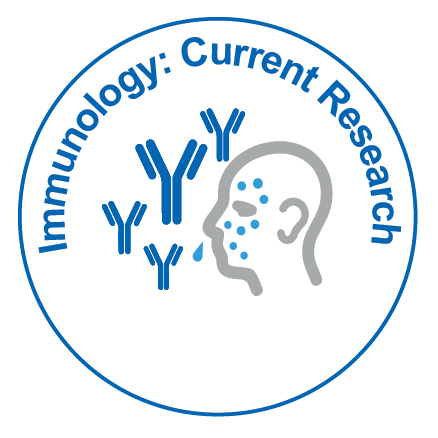The Immune Response: Defending the Body Against Disease
Received: 03-Mar-2025 / Manuscript No. icr-25-166422 / Editor assigned: 05-Mar-2025 / PreQC No. icr-25-166422 (PQ) / Reviewed: 19-Mar-2025 / QC No. icr-25-166422 / Revised: 24-Mar-2025 / Manuscript No. icr-25-166422 (R) / Accepted Date: 30-Mar-2025 / Published Date: 30-Mar-2025
Abstract
The immune response is a complex and vital defense system that protects the body from harmful pathogens such as bacteria, viruses, and other foreign invaders. It operates through two interconnected mechanisms: the innate immune system, which provides an immediate but non-specific response, and the adaptive immune system, which mounts a targeted and long-lasting defense by recognizing specific antigens. Key players in this system include various white blood cells such as macrophages, T cells, and B cells, which work together to identify, neutralize, and eliminate threats. The immune response also involves processes like inflammation and the production of antibodies, as well as the development of immunological memory that enables quicker responses to repeat infections. Understanding the immune response is crucial for advancements in vaccination, treatment of immune-related disorders, and overall disease prevention.
Keywords
Innate immunity; Adaptive immunity; White blood cells; Macrophages; Neutrophils; Dendritic cells; Antibodies; Vaccination; Memory cells
Introduction
The human body is constantly exposed to a vast array of microorganisms, many of which have the potential to cause disease. To survive and remain healthy, the body relies on a sophisticated defense system known as the immune system. This system is designed to detect and eliminate harmful pathogens while distinguishing them from the body’s own healthy cells. The immune response involves a coordinated interaction between various cells, tissues, and molecules that work together to identify, attack, and remember invaders. Understanding how the immune response functions is essential for comprehending how the body protects itself from infections and for developing effective medical interventions such as vaccines and immunotherapies.
Results
Studies on the immune response have revealed that the body employs a two-tiered defense system: the innate and adaptive immune systems. The innate immune system provides an immediate, non-specific response through barriers like the skin and immune cells such as macrophages and neutrophils, which rapidly identify and destroy invading pathogens [1]. The adaptive immune system, activated after initial exposure, offers a highly specific response mediated by B and T lymphocytes [2]. B cells produce antibodies that bind to specific antigens on pathogens, neutralizing them or marking them for destruction [3]. T cells assist in activating other immune cells and directly kill infected cells [4]. Importantly, the adaptive immune system generates memory cells that enable faster and more efficient responses upon re-exposure to the same pathogen [5]. Inflammation, a key feature of the immune response, facilitates the recruitment of immune cells to infection sites through signaling molecules called cytokines [6]. Additionally, vaccination studies have demonstrated the immune system’s ability to develop long-term immunity without causing disease, highlighting the potential for disease prevention through immunization [7]. Furthermore, research into immune system disorders has shown that dysregulation can lead to conditions such as autoimmune diseases, allergies, and immunodeficiencies, emphasizing the importance of balanced immune function [8].
Discussion
Introduction to the Immune Response: The immune system is the body’s defense mechanism against invading pathogens such as bacteria, viruses, fungi, and parasites. It distinguishes harmful invaders from the body’s own cells and eliminates them to maintain health.
Innate immunity: The first line of defense, non-specific, rapid response. Includes physical barriers (skin, mucous membranes), chemical barriers (acidic pH, enzymes), and immune cells like macrophages and neutrophils that attack invaders indiscriminately [9].
Adaptive immunity: A specific response activated if innate immunity is insufficient. It involves lymphocytes (B cells and T cells) that recognize specific antigens on pathogens. This response is slower initially but more targeted and results in immunological memory [10]. Vaccination stimulates this memory without causing disease.
Inflammation and cytokines: Inflammation is a protective response involving increased blood flow and immune cell recruitment to infection sites. Cytokines are signaling molecules that regulate immune responses and inflammation. Disorders of the immune system include autoimmune diseases (when the immune system attacks the body's tissues), allergies (exaggerated responses to harmless substances), and immunodeficiency (weakened immune responses leading to increased infections) [11].
Conclusion
The immune response is a vital and intricate defense mechanism that enables the body to identify, combat, and remember harmful pathogens. Through the combined efforts of the innate and adaptive immune systems, the body can mount immediate and specific responses to protect against disease. The ability of the immune system to develop memory forms the foundation for effective vaccination strategies, which have significantly reduced the impact of infectious diseases worldwide. However, when immune function is impaired or improperly regulated, it can lead to serious health issues such as autoimmune disorders and allergies. Continued research into the immune response is essential for advancing medical treatments, improving vaccines, and enhancing overall health.
Acknowledgement
None
Conflict of Interest
None
Citation: Morales O (2025) The Immune Response: Defending the Body AgainstDisease. Immunol Curr Res, 9: 252.
Copyright: © 2025 Morales O. This is an open-access article distributed underthe terms of the Creative Commons Attribution License, which permits unrestricteduse, distribution, and reproduction in any medium, provided the original author andsource are credited.
Select your language of interest to view the total content in your interested language
Share This Article
Recommended Journals
Open Access Journals
Article Usage
- Total views: 327
- [From(publication date): 0-0 - Dec 06, 2025]
- Breakdown by view type
- HTML page views: 239
- PDF downloads: 88
